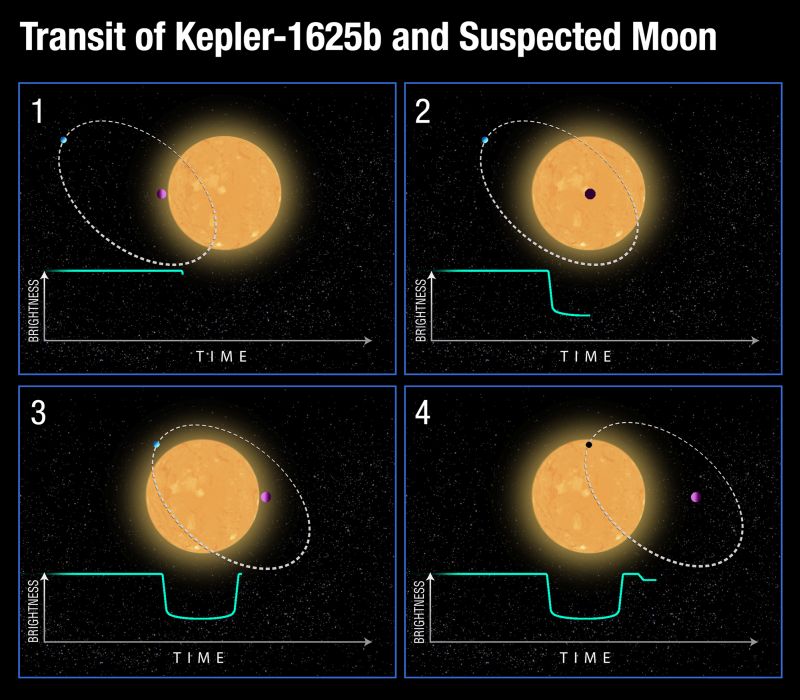Snake_Baker
The one true King of the North
- Apr 24, 2013
- 81,024
- 153,169
- AFL Club
- North Melbourne
- Other Teams
- Essendon Lawn Bowls Club
- Banned
- #1
A Neptune-Sized Moon Orbiting a Jupiter-Sized Planet
A pair of astronomers combing through data from the Kepler spacecraft have discovered the first exomoon. The moon is in the Kepler 1625 system about 8,000 light years away, in the constellation Cygnus. It orbits the gas giant Kepler 1625b, and, unlike all the moons in our Solar System, this one is a “gas moon.”
It was only a matter of time before we found an exomoon. We’ve found thousands of exoplanets, thanks mostly to the Kepler spacecraft. And where there are planets, we can expect moons. But even though it seemed inevitable, the first confirmed exomoon is still exciting.

This diagram shows the sequence of photometric observations taken by Hubble. The purple object represents the planet Kepler 1625b, and the smaller green object is that planet’s exomoon. The exomoon travels in front of the star about 3.5 hours after the planet. Image: NASA, ESA, D. Kipping (Columbia University), and A. Feild (STScI)
The exomoon is much different than what we see in our own Solar System. It orbits a gas giant several times larger than Jupiter, called Kepler 1625b. Preliminary evidence indicates that the moon itself, which is called Kepler 1625b I, is a gas moon, and is about the size of Neptune. Nothing like this exists in our system.
https://www.universetoday.com/14017...e-sized-moon-orbiting-a-jupiter-sized-planet/
A pair of astronomers combing through data from the Kepler spacecraft have discovered the first exomoon. The moon is in the Kepler 1625 system about 8,000 light years away, in the constellation Cygnus. It orbits the gas giant Kepler 1625b, and, unlike all the moons in our Solar System, this one is a “gas moon.”
It was only a matter of time before we found an exomoon. We’ve found thousands of exoplanets, thanks mostly to the Kepler spacecraft. And where there are planets, we can expect moons. But even though it seemed inevitable, the first confirmed exomoon is still exciting.

This diagram shows the sequence of photometric observations taken by Hubble. The purple object represents the planet Kepler 1625b, and the smaller green object is that planet’s exomoon. The exomoon travels in front of the star about 3.5 hours after the planet. Image: NASA, ESA, D. Kipping (Columbia University), and A. Feild (STScI)
The exomoon is much different than what we see in our own Solar System. It orbits a gas giant several times larger than Jupiter, called Kepler 1625b. Preliminary evidence indicates that the moon itself, which is called Kepler 1625b I, is a gas moon, and is about the size of Neptune. Nothing like this exists in our system.
https://www.universetoday.com/14017...e-sized-moon-orbiting-a-jupiter-sized-planet/




